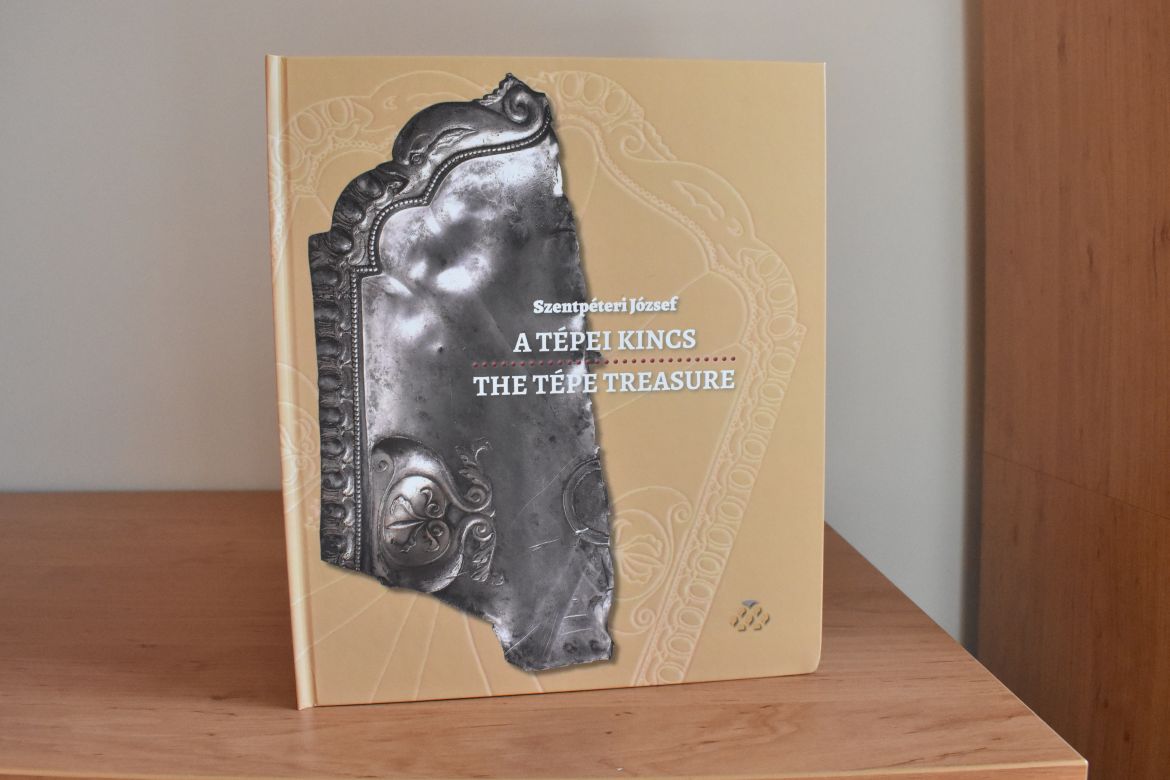The richly illustrated new volume of József Szentpéteri's book, The Tépe Treasure presents the story of an exciting investigation in both English and Hungarian. Exactly 110 years have passed since the discovery of a fabulous treasure on the outskirts of a remote village in County Bihar, in an area known as Görbekert, which in the finders’ family lore was preserved as the “golden mound”. The lucky finders divided the silver and gold artefacts which had unexpectedly fallen into their lap equally among themselves, and that would probably have been the end of the story, had not the Christmas celebrations fast approached – thus begins an exciting chapter covering the story of the treasure found in December 1911 in the annals of archaeological detective work in Hungary.

The archaeological and art historical research conducted during the past century have demonstrated that this roughly 1350- to 1500-year-old assemblage had in all likelihood originated from the treasury of the Avar khagan lording over the Carpathian Basin, and that the twists and turns in its eventful biography can be reconstructed as follows: Byzantine-Avar gift exchange, hoarding, royal burial, grave robbery, and finally its concealment in the marshland. The meticulous study of archival documents and meteorological data, successive field trips and field surveys, a series of museum exhibitions, and the work of three generations of scholars were needed to trace the path of the treasure’s surviving half-a-dozen objects (a silver gilt plate, a silver goblet and silver jug, the pseudo-buckle mount of a ceremonial belt, and the gold fittings stripped from a sword and a knife) leading from the Csörsz Dyke marking the eastern border of the Avar Khaganate to the city of Constantinople, the capital of the Byzantine Empire.

